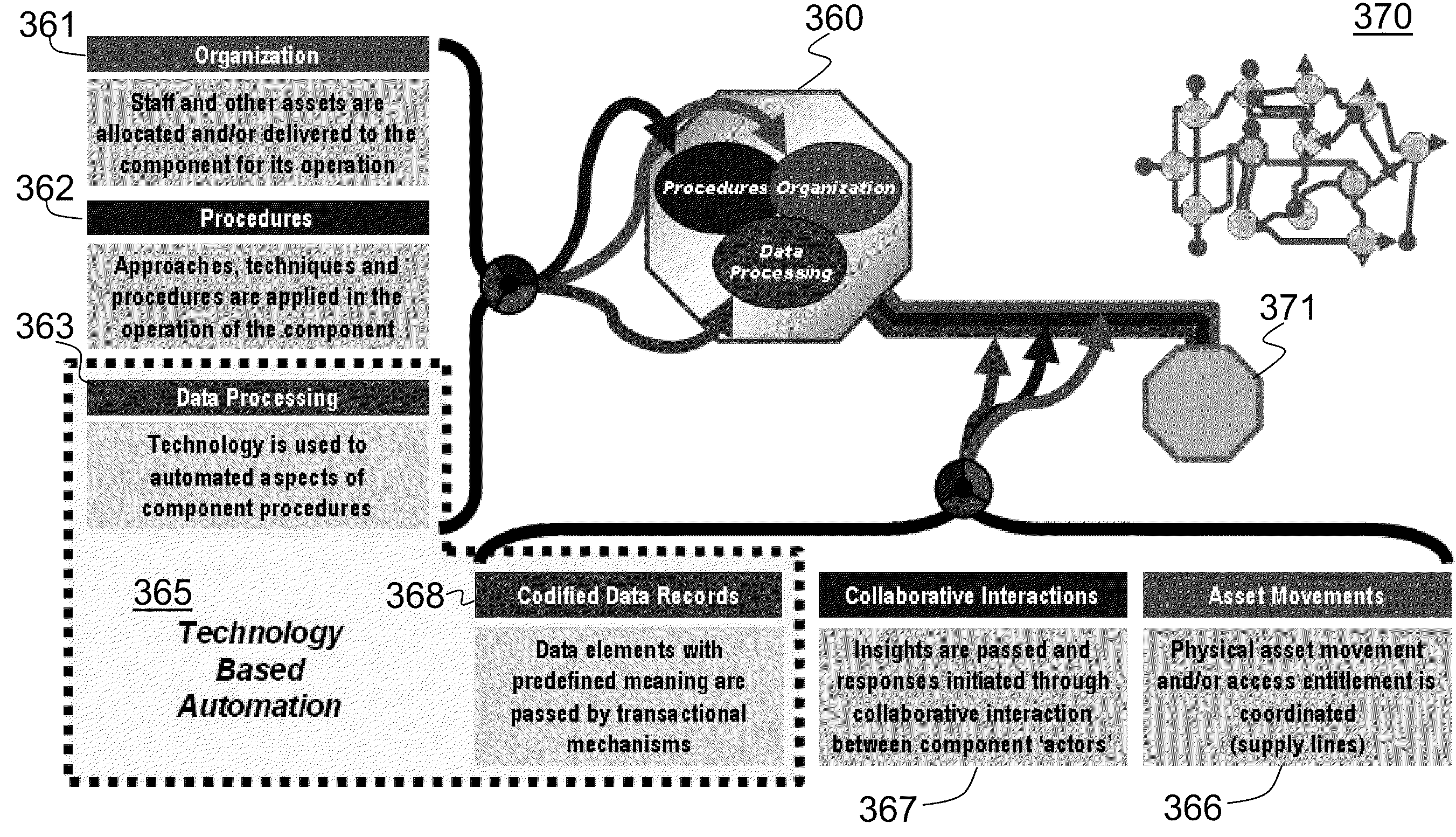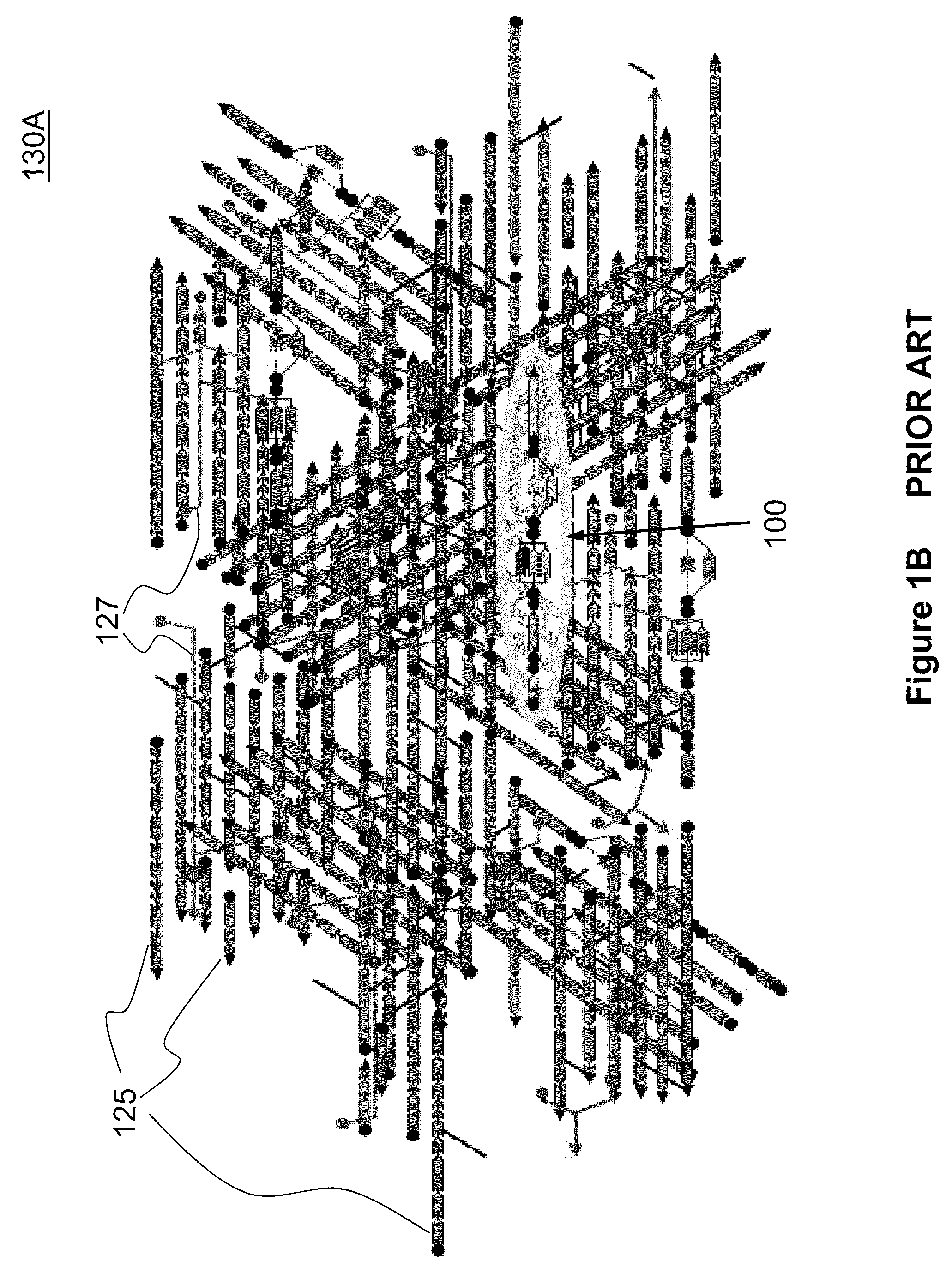System and method for establishing a commercial ecosystems blueprint in an asset based component business model architecture
a business model and ecosystem technology, applied in the field of business architecture, can solve the problems of not being able to handle the relatively simple association of use with a room in the building architecture, the design of business is clearly more complex than its electrical wiring, and the existing approach is not strong enough
- Summary
- Abstract
- Description
- Claims
- Application Information
AI Technical Summary
Benefits of technology
Problems solved by technology
Method used
Image
Examples
Embodiment Construction
[0044]The inventor of the present invention also invented the co-pending invention described in U.S. patent application Ser. No. 11 / 176,371 for “SYSTEM AND METHOD FOR ALIGNMENT OF AN ENTERPRISE TO A COMPONENT BUSINESS MODEL” (hereinafter termed “the above referenced foundation patent application”), whose disclosure is hereby incorporated by reference as foundational for the present invention in content and terminology.
[0045]Currently, most businesses and enterprises function on the basis of pre-set processes, which they are under pressure to optimize. A well known way to optimize process is the Six Sigma approach. However, this approach is still inherently dependent on a business using process as the key element of aggregating and disaggregating its divisions, elements, and component parts, making each one more efficient, and then “restacking” or reassembling the process, sometimes with shortcuts in place, or with elements done in cheaper locations (offshoring).
[0046]The infrastruct...
PUM
 Login to View More
Login to View More Abstract
Description
Claims
Application Information
 Login to View More
Login to View More - R&D
- Intellectual Property
- Life Sciences
- Materials
- Tech Scout
- Unparalleled Data Quality
- Higher Quality Content
- 60% Fewer Hallucinations
Browse by: Latest US Patents, China's latest patents, Technical Efficacy Thesaurus, Application Domain, Technology Topic, Popular Technical Reports.
© 2025 PatSnap. All rights reserved.Legal|Privacy policy|Modern Slavery Act Transparency Statement|Sitemap|About US| Contact US: help@patsnap.com



